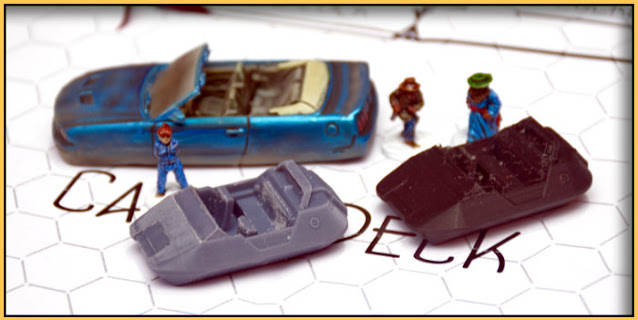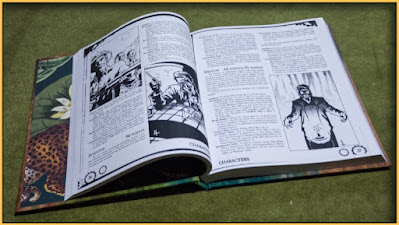Quite a few years ago, I printed a PDF of
GURPS Steampunk, as I had some idea about running a late Victorian 1890s campaign involving an alien invasion, weird scientification, and the rescue of Queen Victoria. I did run that campaign, but I used the Hero System, not GURPS.
Until now, that printout has just been sitting in a rather bulky plastic sheet display book, and since I have the capability, I thought I might as well turn it into a proper book.
The bookcloth is some stuff that I made a few days ago; some printed cotton impregnated with a paste/acrylic medium mix. It works pretty well.
I used Affinity Photo to cobble together a vaguely Steampunky illustration for the front cover, using bits and pieces snarfed off the internet. I laminated the result and glued it in place, along with a spine title cartouche.
I used a retro poster on heavyish matte paper for the endpapers. The illustrations have nothing whatever to do with the book's subject matter, but they're bold and colourful, which is mainly what I wanted.
The pages were edge-glued in a double-fan, but I also drilled and cross-stitched the spine for extra strength. That means the book will never lay completely flat, but since I'll probably never be using it as a reference book at the games table, I don't care too much about that.
It doesn't show in this photo, but the original printout was single-sided, so each printed spread is followed by a blank one. That means that the book is twice as thick as it really needs to be. I suppose I could have reprinted it double-sided, but I really couldn't be bothered.
The cover boards have an issue: the piece of 2mm grey board that I cut them from had its grain running the wrong way. That means that with all the moisture from the gluing, they bow horizontally instead of vertically, making the book look distinctly tubby.
The condition has been somewhat ameliorated as it dries properly, and with ruthless pressing, but it will never be permanently 100% flat — it's likely to show itself again with changes in ambient humidity. However, since it's unlikely to spend very much time out of the bookshelf, I doubt that it's going to be a major problem.


















































